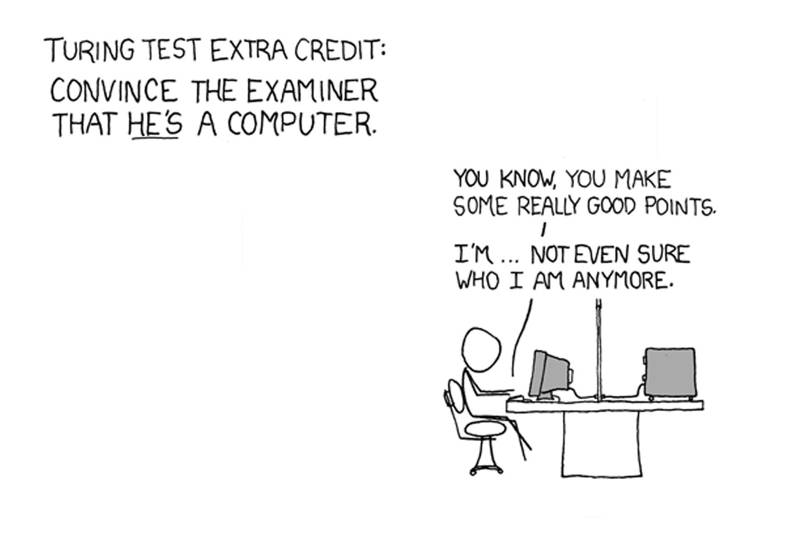

It was developed by Russian-born Vladimir Veselov, who lives in the United States, and Ukrainian Eugene Demchenko who lives in Russia.īoth Veselov and Demchenko have a history of being involved with the Turing test including the use of Goostman in previous attempts. The winning computer program posed as a 13 year old Ukrainian boy called Eugene Goostman. Thirty judges “conversed” with 5 “chatbots” and 25 humans and tried to tell them apart.

The current test organised by the University of Reading and run at the Royal Society in the UK, tested whether the judges would confuse the computer for a human at least 30% of the time. Since Turing’s original proposal, the Turing test has taken various forms but the form has settled on testing whether a human judge could successfully pick whether the entity answering questions was human or machine. This article by David Glance originally appeared at The Conversation, a Social Science Space partner site, under the title “A computer beating humans and passing Turing’s test wasn’t a fair fight” The machine would win if the interrogator guessed the answer wrongly as many times as they had done when a human was answering. The subject was then replaced with a computer and the interrogator went through the same process. The interrogator was separated from the test subjects and conversed with them via text through a computer. His original proposal involved taking three people, a man, a woman and an interrogator and had the interrogator ask unrestricted questions to one of the subjects chosen at random and try and determine whether they were talking to either the man or the woman. In the paper he suggested a practical way in which you could test whether a machine could think. This success has come on the 60th anniversary of Alan Turing’s death and is expected to further fuel the controversy around the fundamental question of whether what has been demonstrated is actually a machine thinking like a human.Īlan Turing, the famous mathematician and computer programmer who worked on cracking the Enigma code during the Second World War proposed his test in a 1950 paper.

A depiction of Alan Turing at Bletchley Park, the World War II home of Britain’s codebreakers.In an event that is sure to capture the world’s imagination and that has been proclaimed as setting a new milestone in the study of artificial intelligence, a computer program has successfully passed the “Turing Test.” To do this, the computer engaged in a conversation with judges and convinced at least some of them, that they were in fact talking to a human.


 0 kommentar(er)
0 kommentar(er)
